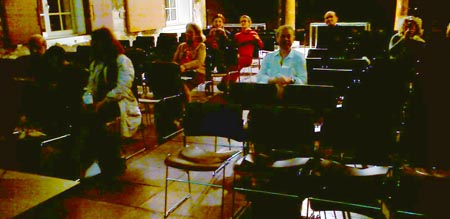witten : 6 octobre 2006
Silence!
Performance
Live performance, interactive staging, mobile art, locative
6th October 2006
It takes place in a room. Theatre in the round. On the stage, a play is being performed. A classic (Romeo and Juliet?) : it needs to be huge. The references must be obvious. It can be seen but not heard. The actors play, they wear costumes, but we cannot hear the text. It is as though the sound had been turned off.
The picture is a somewhat blurred, underexposed, of poor quality and covers the back of the stage. A face, close up to the lens, apparently photographed using a cell-phone.
In the audience, we can hear a voice corresponding to the picture. The telephone conversation interferes with the play. Sometimes they blend together. Most of the time, the two soundtracks, that of the telephone and that of the theatre, just ignore each other. The people in the audience try to listen, but find it difficult.
It turns out that in the audience, some members are talking on the phone, mumbling, as though not disturbing anyone. Others sometimes tap them on the shoulder, as though to say: ‘Could you stop talking, we’re trying to listen’. It takes a certain time to understand that the picture on the stage is that of the people in the audience, who apparently consider that projecting their life has become an emergency, compared to the play, an emergency that, involuntarily, they share with the audience.
In other places, at the same time, in the café, in the street, in a rather old-fashioned flat, throughout the play, speakers are having a conversation that becomes more and more coherent … it is the story of that very moment that is being acted out on the stage.
The play does not only take place in the audience. The audience can also be invited to places where they can have a conversation with impolite spectators.









